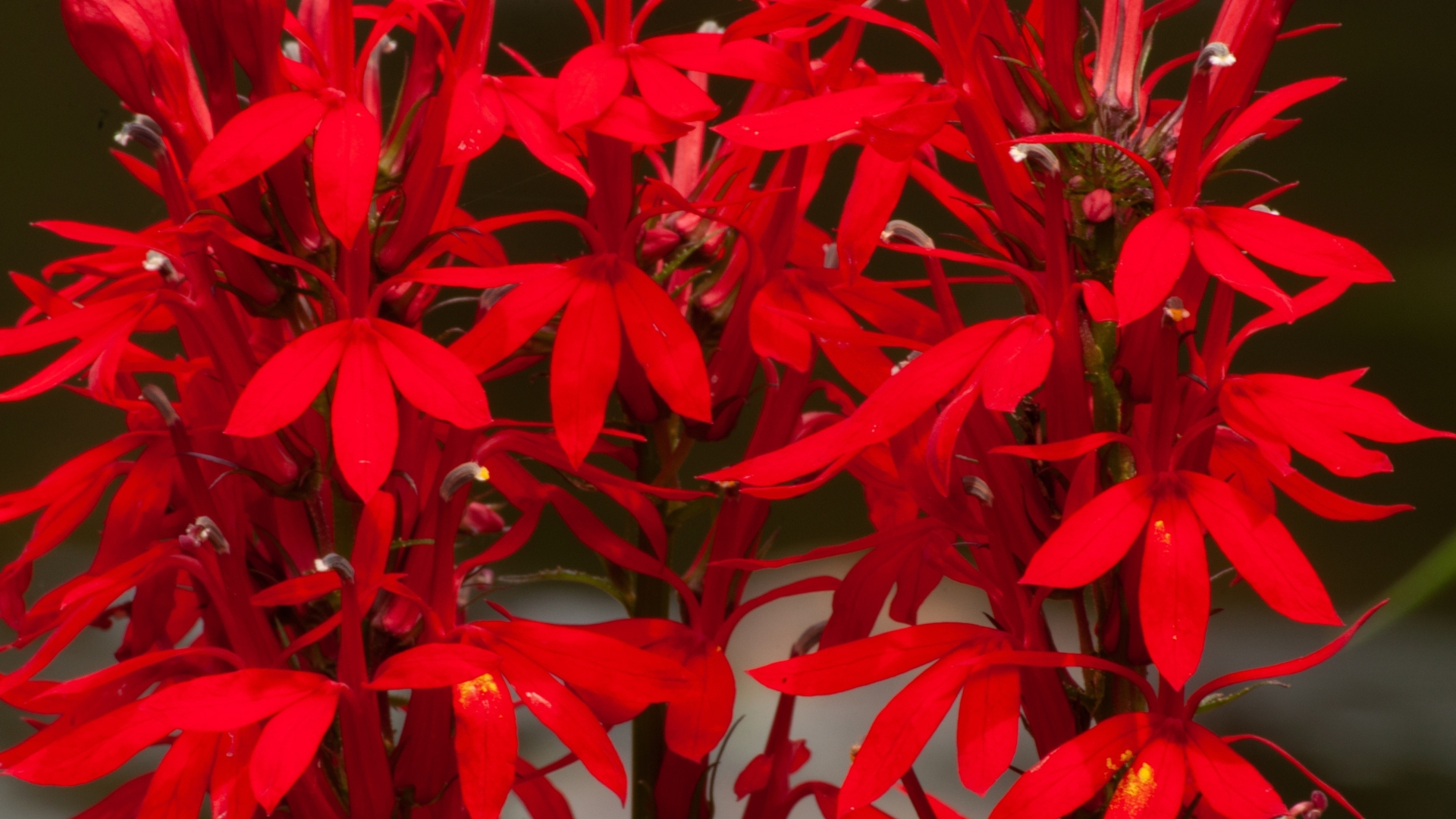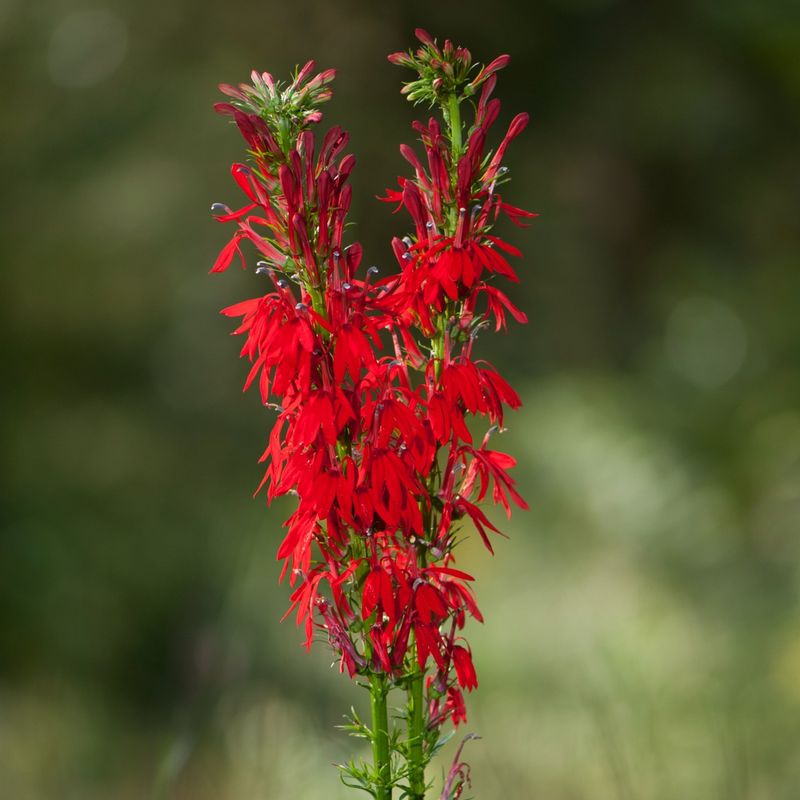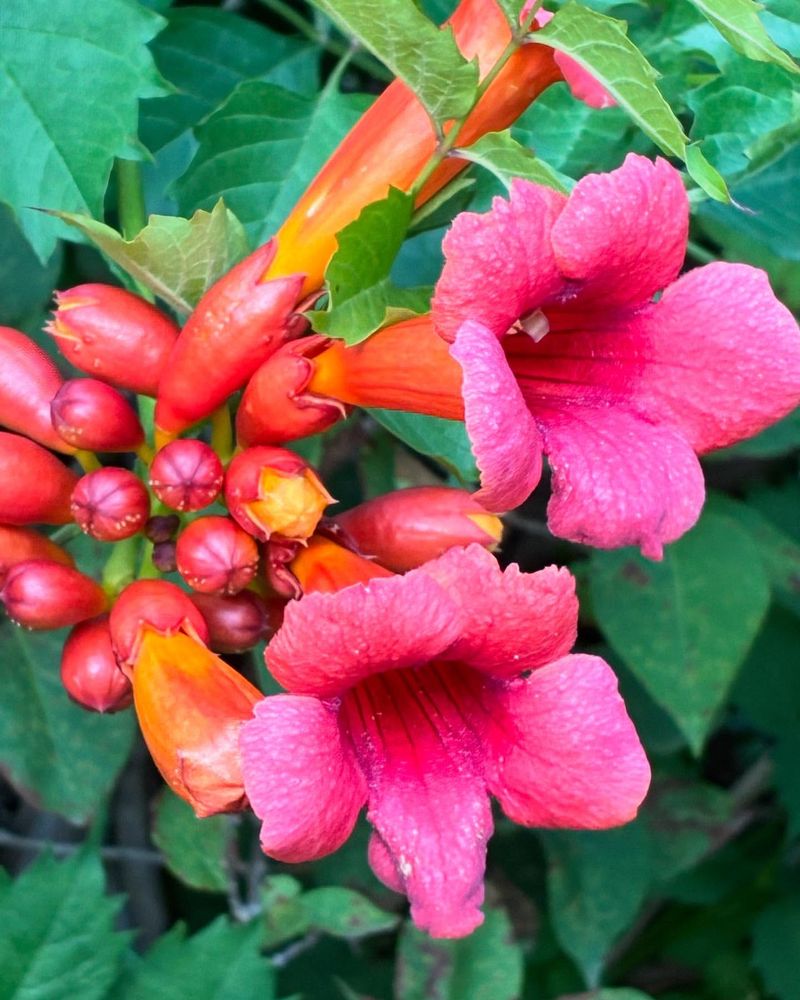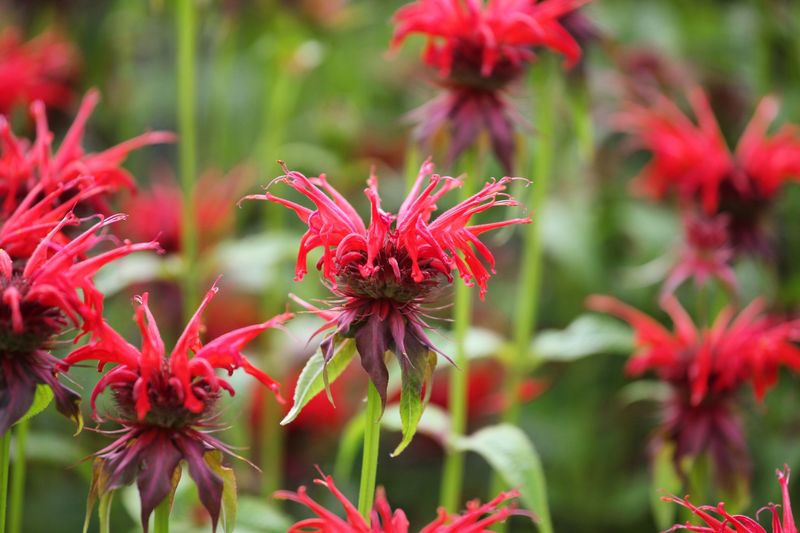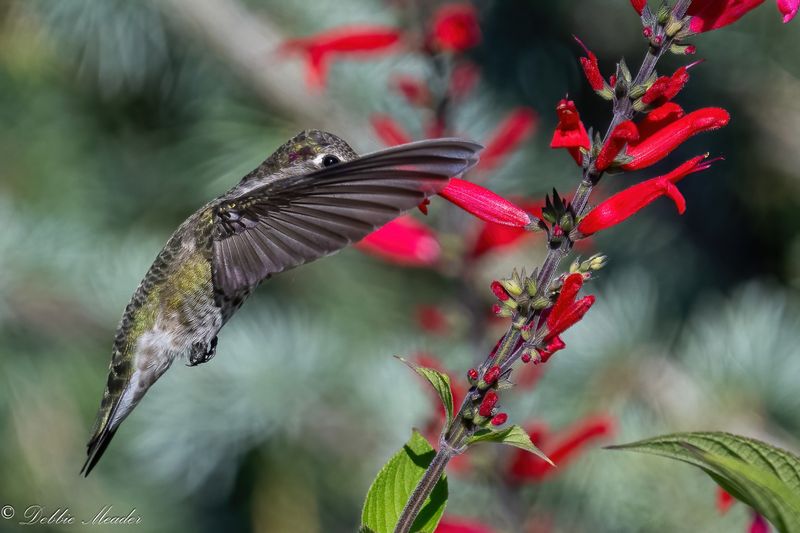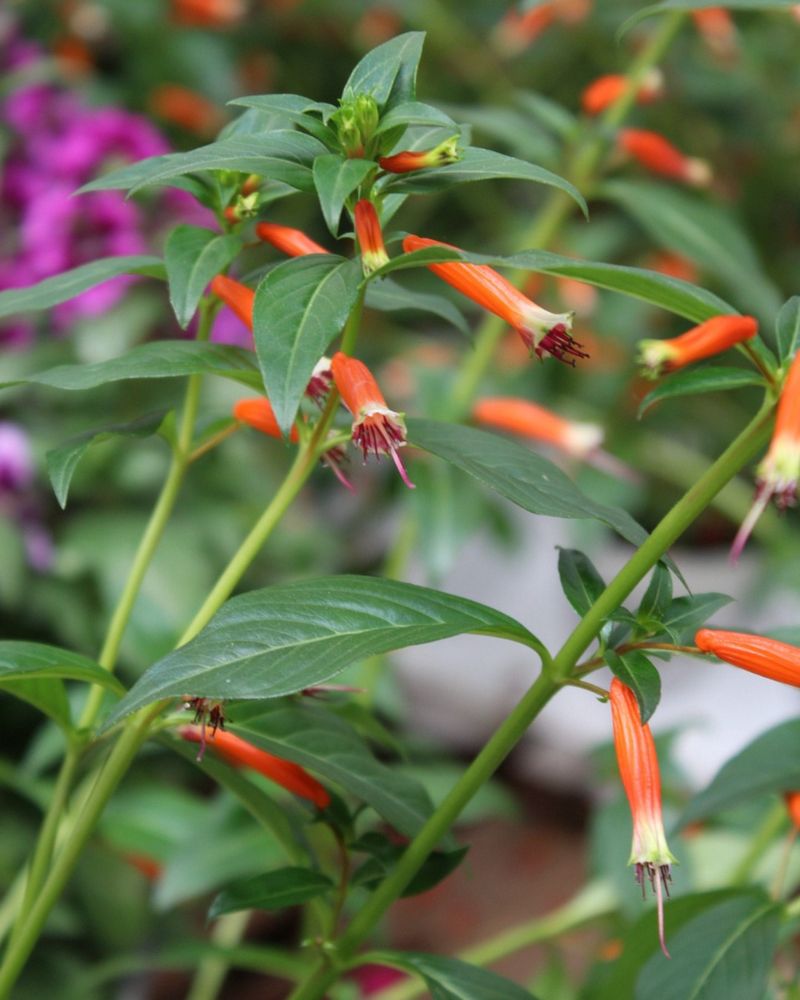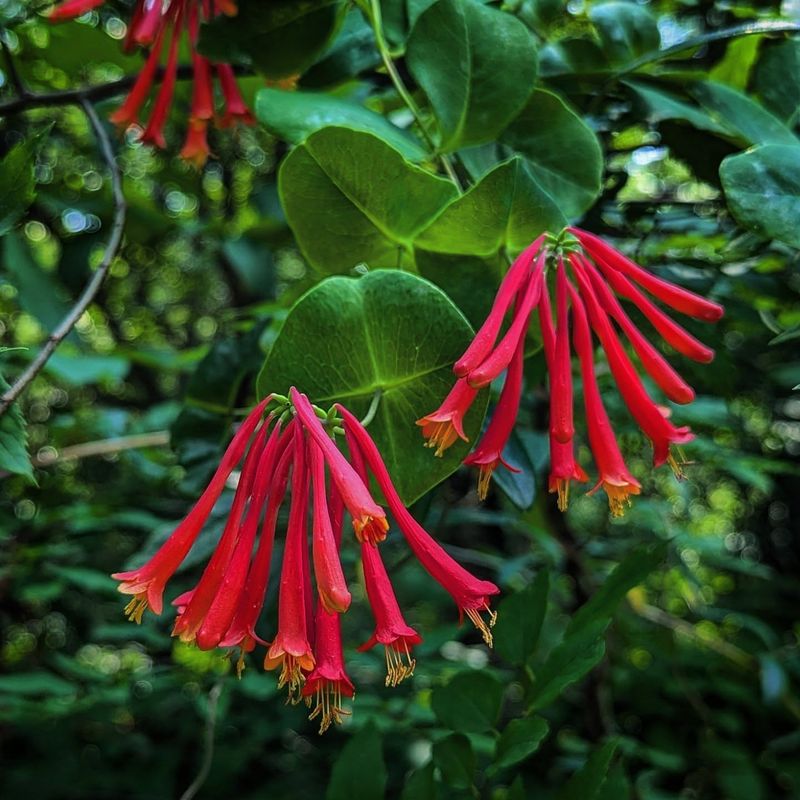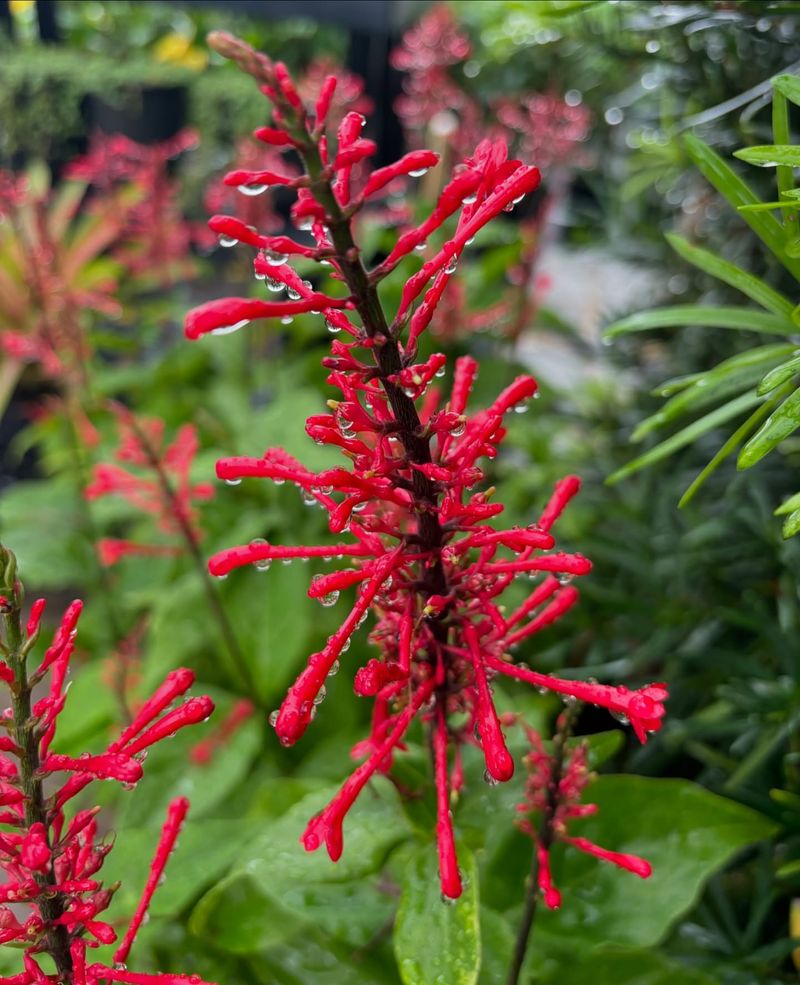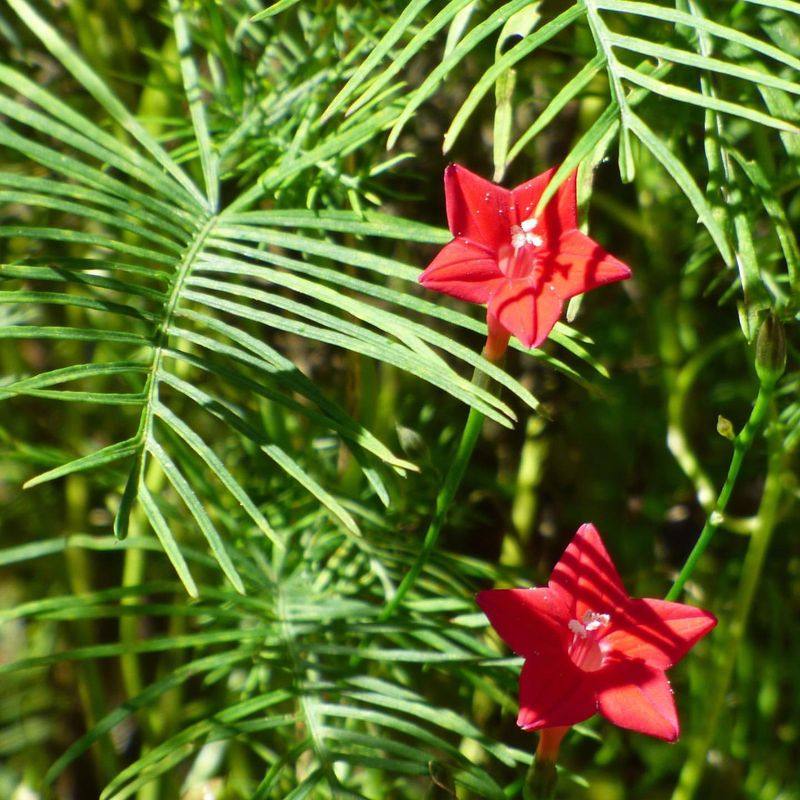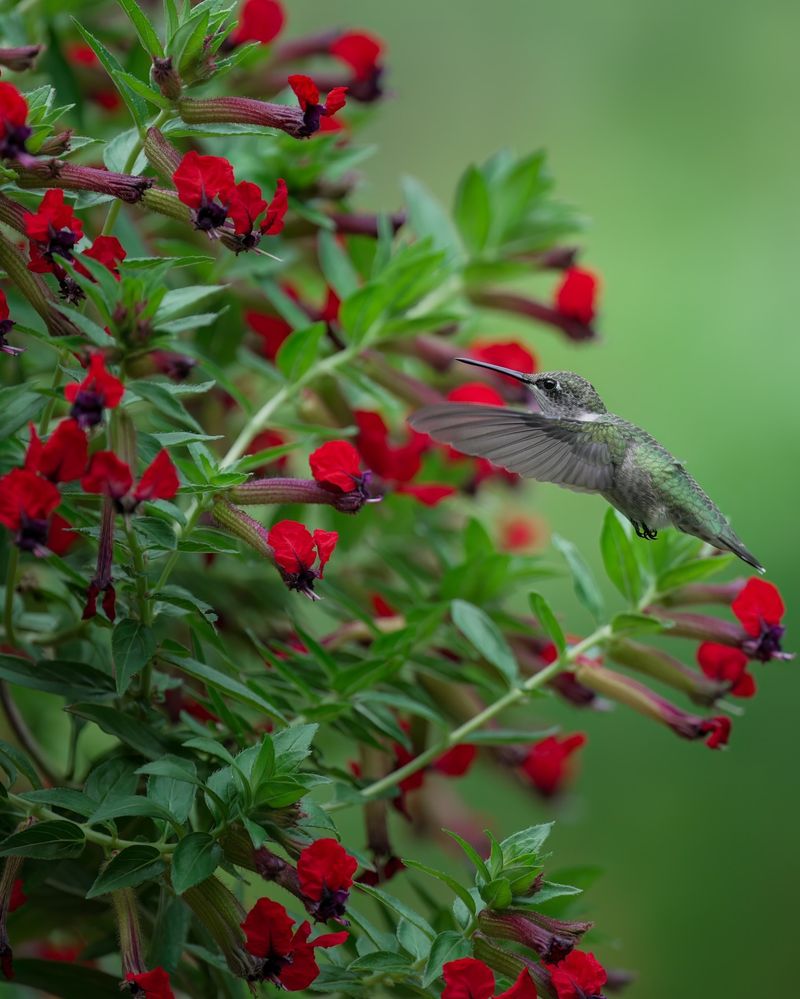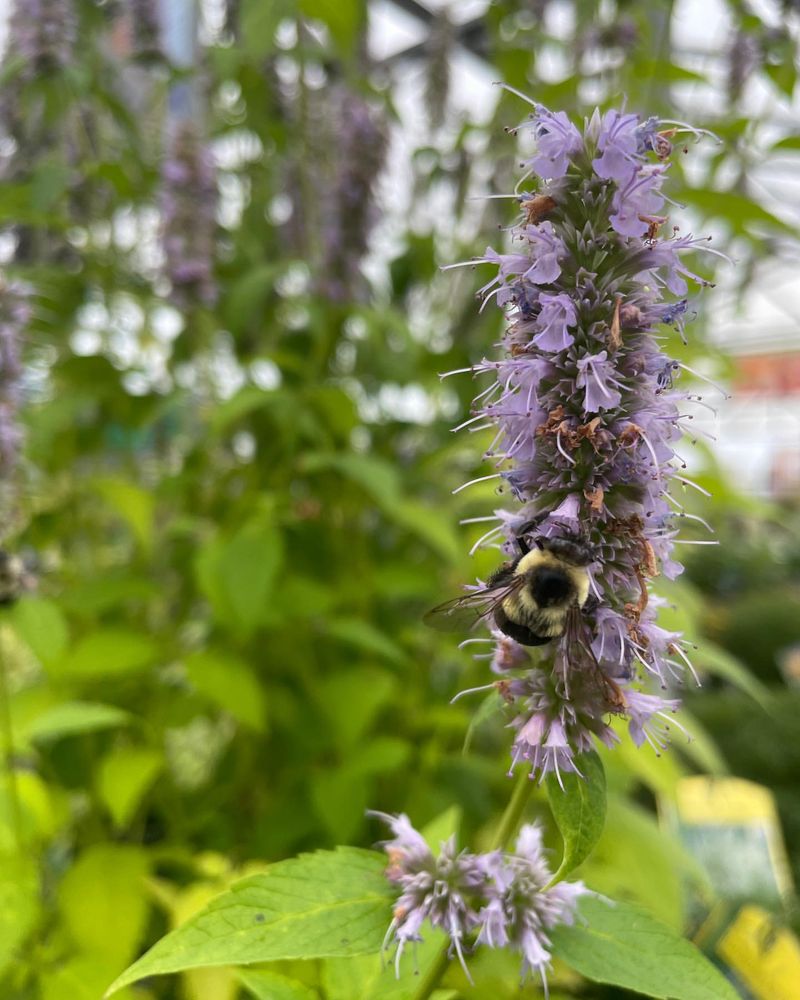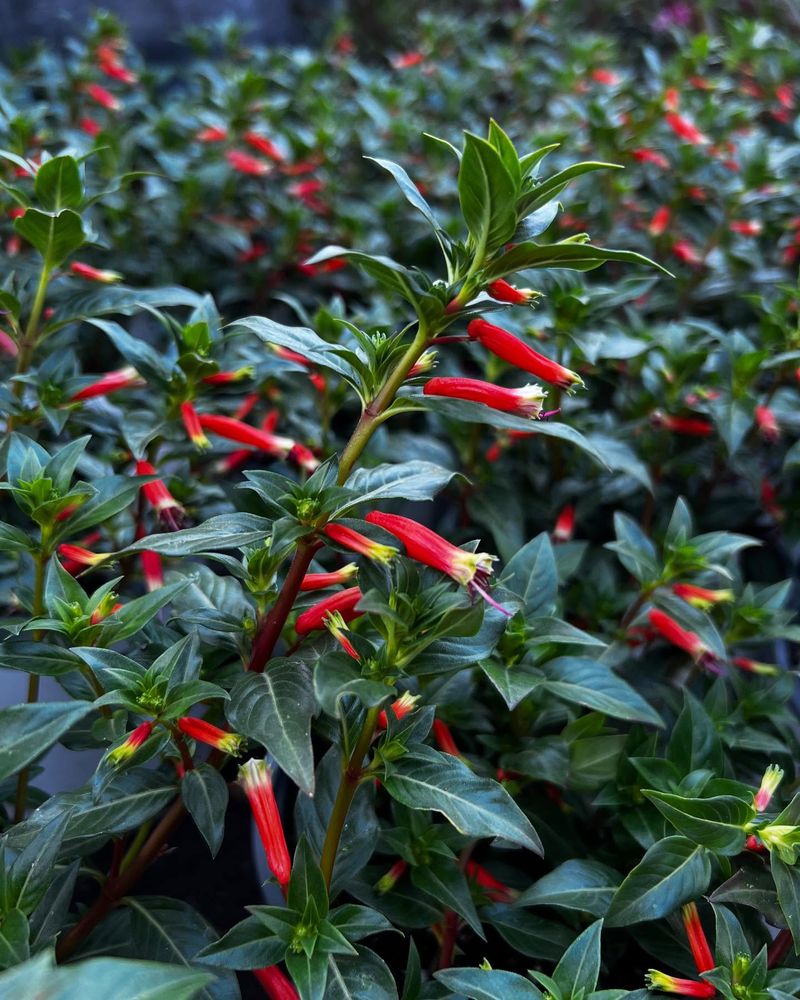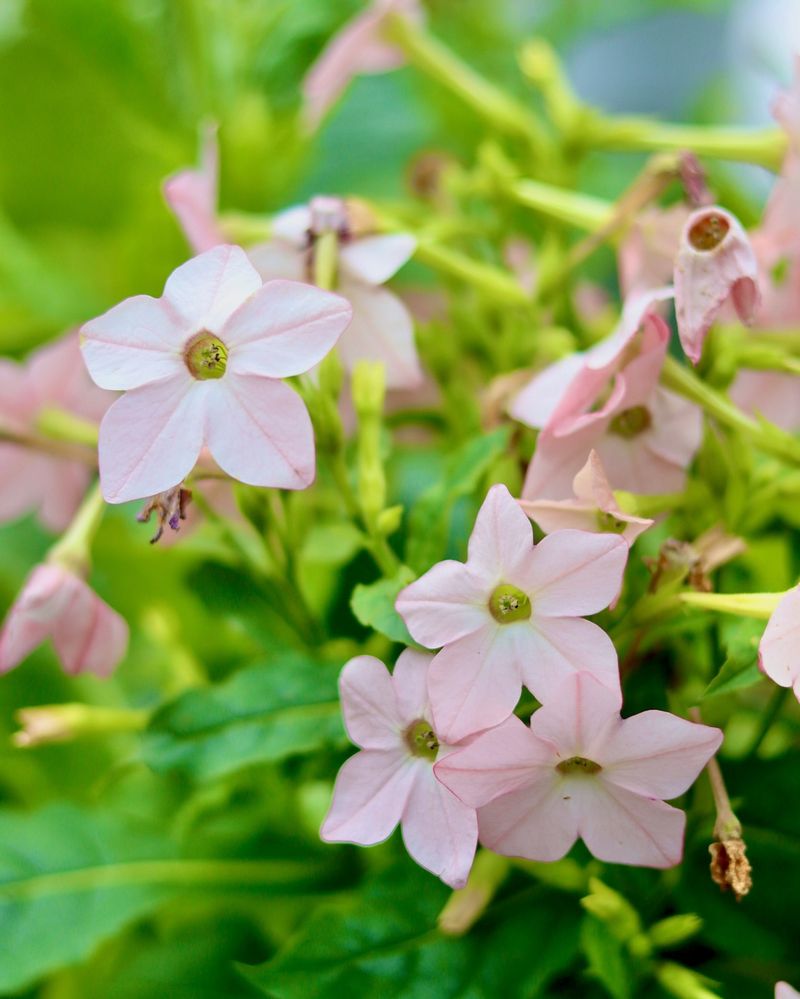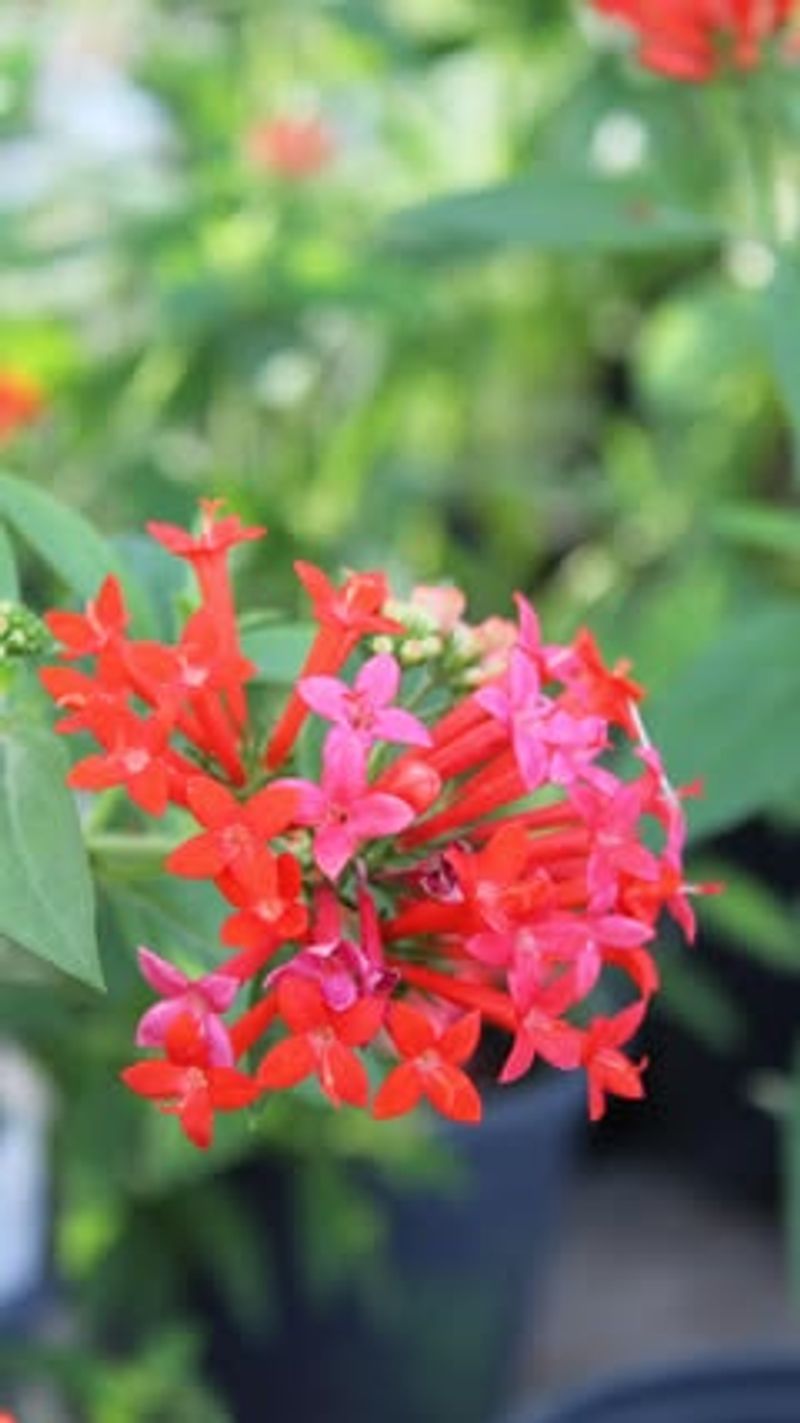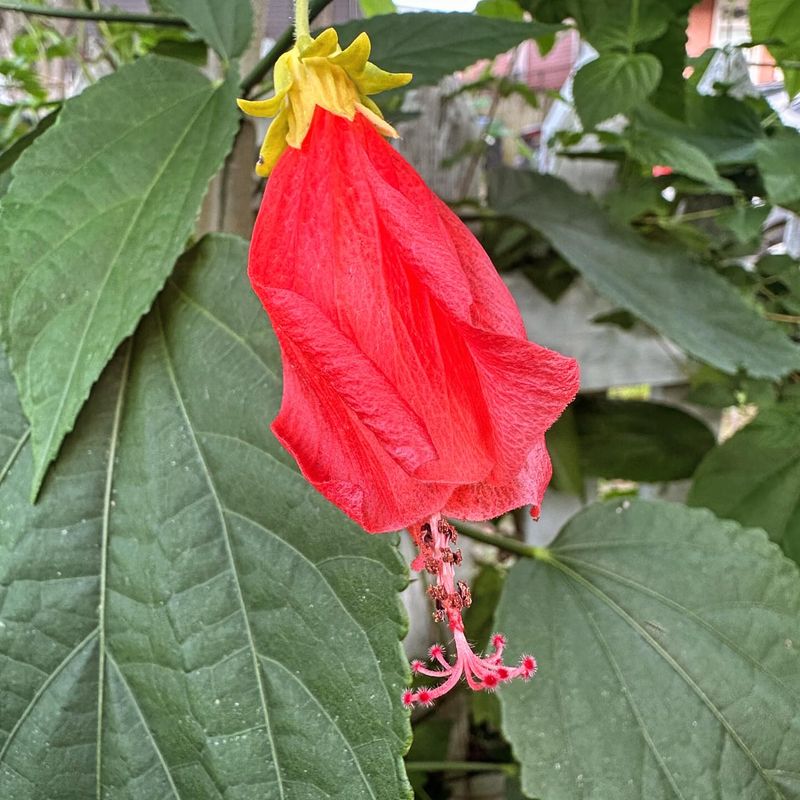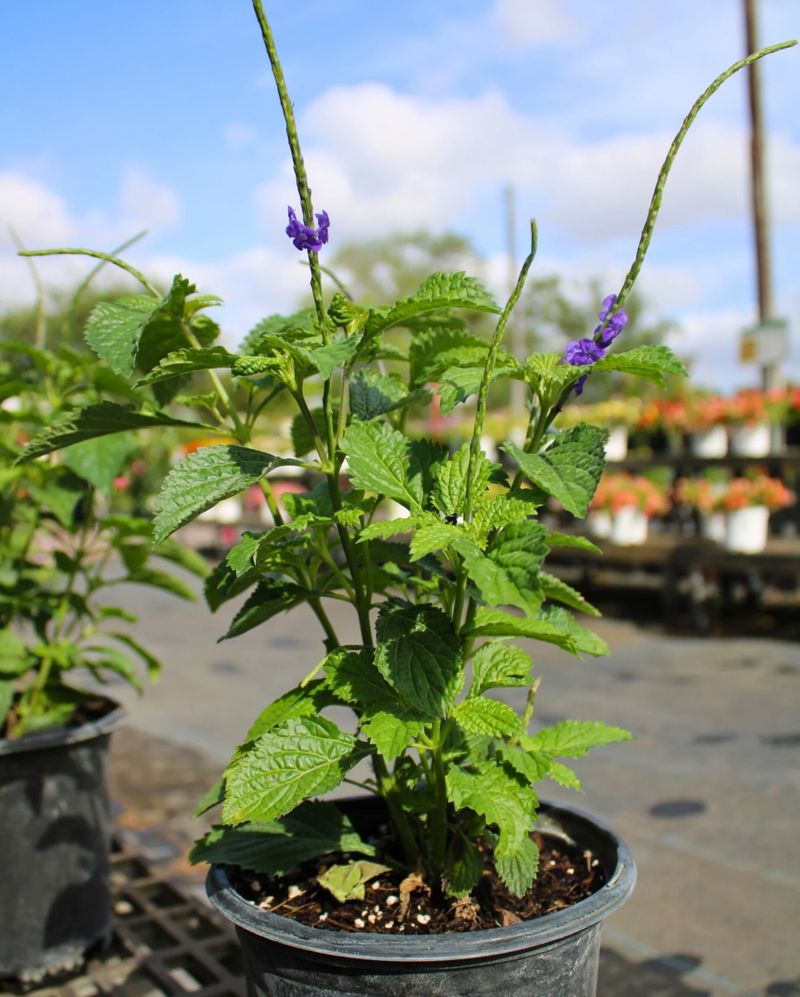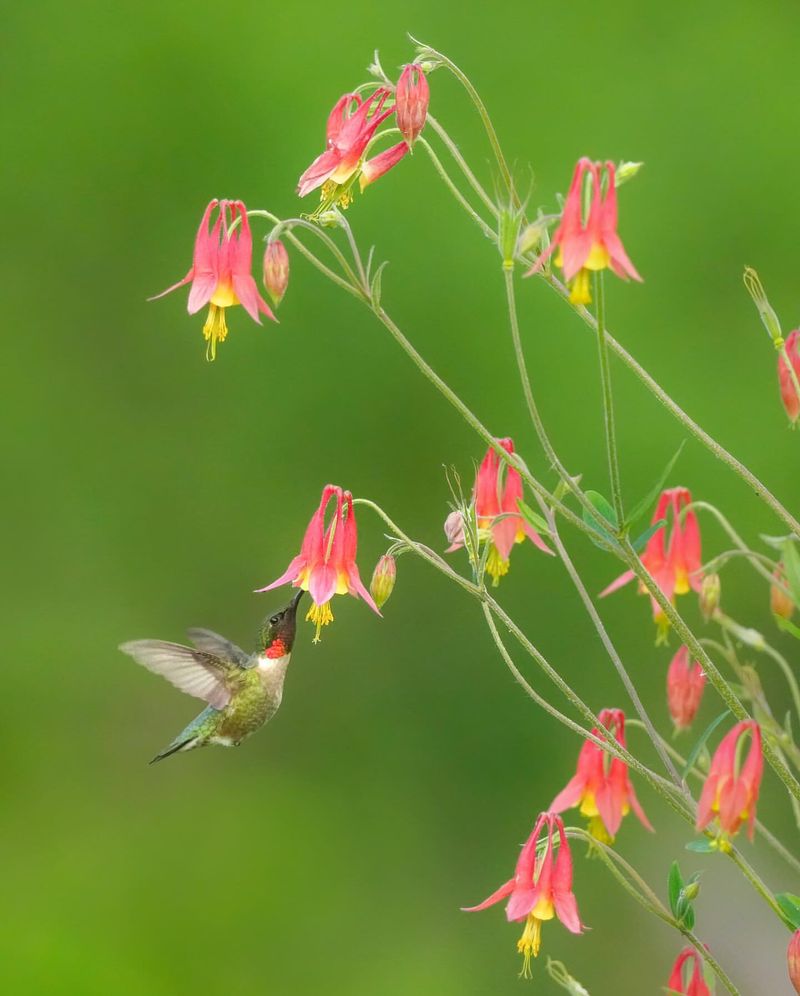Hummingbirds love the unexpected, and I’ve found that some of the most unusual flowers are their absolute favorites. In my Tennessee garden, it’s the funky shapes and bold colors that seem to draw them in like magnets.
These blooms aren’t just eye-catching—they’re nectar-packed and built for those fast little flyers. If you want your garden buzzing with wings and color, these flowers are the way to go.
Let’s give the hummingbirds a show they won’t want to miss!
1. Cardinal Flower
Brilliant scarlet spikes make this native perennial irresistible to hummingbirds across Tennessee. The vibrant red blooms appear in late summer when many other flowers have faded.
Thriving in moist areas along streams or in rain gardens, cardinal flower reaches 3-4 feet tall. Its tubular flowers perfectly match hummingbird beaks, making it one of nature’s perfect partnerships.
2. Trumpet Vine
Often called ‘hummingbird vine’ by Tennessee gardeners, this vigorous climber produces clusters of orange-red trumpet-shaped blooms that hummingbirds can’t resist. The tubular flowers contain abundant nectar.
Growing up to 40 feet, this native vine needs sturdy support. While some consider it aggressive in Tennessee landscapes, strategic placement creates spectacular hummingbird viewing opportunities.
3. Bee Balm
Funky, tousled blooms in shades of red, pink, and purple create a wildflower look that Tennessee hummingbirds adore. The aromatic foliage deters deer while attracting beneficial insects.
Native to eastern North America, bee balm thrives in Tennessee’s climate. The plant forms spreading clumps that fill garden spaces with color from early to mid-summer.
4. Pineapple Sage
Late-season scarlet blooms appear just as hummingbirds prepare for migration through Tennessee. The leaves emit a delightful pineapple scent when brushed, adding sensory appeal to gardens.
This tender perennial grows quickly to 3-4 feet tall. In Tennessee’s warmer regions, it may survive winter with mulch, providing returning hummingbirds with early season nectar.
5. Cigar Plant
Unusual tubular flowers blend orange, red, and yellow, resembling tiny lit cigars that fascinate both humans and hummingbirds in Tennessee gardens. The continuous bloom cycle provides reliable nectar sources.
This tender perennial works beautifully in containers on Tennessee patios. Its compact habit and non-stop flowering from spring until frost make it perfect for small spaces where you can observe hummingbird visits.
6. Coral Honeysuckle
Unlike its invasive Japanese cousin, this native vine offers coral-red tubular blooms perfectly shaped for hummingbird beaks. The trumpet-shaped flowers dangle elegantly from twining stems throughout Tennessee summers.
Growing more restrained than other honeysuckles, this Tennessee native attracts hummingbirds without taking over the garden. Its blue-green foliage provides attractive backdrop even when not flowering.
7. Firespike
Dramatic red flower spikes emerge in late summer just when Tennessee hummingbirds need energy for migration. The glossy dark green leaves create striking contrast with the brilliant blooms.
Treated as an annual in most Tennessee gardens, firespike grows rapidly to 3-4 feet. In sheltered locations with mulch, it might survive mild Tennessee winters to bloom even more profusely the following year.
8. Cypress Vine
Delicate star-shaped scarlet flowers appear abundantly on this feathery-leaved annual vine. Hummingbirds throughout Tennessee become regular visitors once they discover this nectar source.
Fast-growing and easy from seed, cypress vine quickly covers fences or trellises in Tennessee gardens. The fern-like foliage adds textural interest while the tiny but numerous blooms create hummingbird feeding stations.
9. Bat-faced Cuphea
Whimsical purple and red flowers resemble tiny bat faces, creating conversation pieces in Tennessee gardens. Hummingbirds don’t mind the unusual appearance – they just love the nectar!
This low-growing perennial blooms continuously from spring until frost in Tennessee. Its compact habit makes it perfect for container gardens or front-of-border plantings where hummingbird activity can be easily observed.
10. Anise Hyssop
Spikes of lavender-blue flowers attract both hummingbirds and butterflies to Tennessee gardens. The licorice-scented foliage adds sensory appeal when brushed against or used in teas.
This drought-tolerant native stands up beautifully to Tennessee’s summer heat. Self-seeding gently without becoming invasive, it creates naturalistic plantings that provide reliable hummingbird nectar.
11. Mexican Cigar Plant
Long, tubular orange-red blooms dangle from arching stems, creating perfect hummingbird feeding stations in Tennessee gardens. Unlike common salvias, this unusual species offers exotic appeal.
Hardy in Tennessee’s warmer regions, this architectural plant grows 3-4 feet tall and wide. Its late summer to fall blooming period provides critical nectar when hummingbirds need energy for migration through the state.
12. Flowering Tobacco
Sweetly fragrant after sunset, these trumpet-shaped blooms in white, pink, or lime green attract hummingbirds during Tennessee’s early morning hours. The tall stalks create vertical interest in garden beds.
Easily grown from seed, flowering tobacco thrives in Tennessee’s summer climate. The sticky foliage deters pests while the tubular flowers provide perfect feeding stations for hummingbird beaks.
13. Scarlet Bush
Clusters of tubular red flowers appear continuously from spring through fall on this subtropical shrub. In Tennessee gardens, it’s typically grown as an annual or container plant that hummingbirds quickly discover.
Fast-growing to 3 feet tall, scarlet bush creates impressive displays in a single Tennessee season. Its bright green foliage sets off the vibrant blooms that serve as beacons to passing hummingbirds.
14. Turk’s Cap
Unusual twisted red petals never fully open, creating turban-shaped blooms perfect for hummingbird beaks. This old-fashioned plant is regaining popularity in Tennessee gardens for its wildlife value.
Thriving in partial shade, Turk’s cap tolerates Tennessee’s hot summers better than many flowering plants. Its drought tolerance once established makes it perfect for woodland garden edges where hummingbirds love to feed.
15. Blue Porterweed
Tiny purple-blue flowers arranged on spikes create landing platforms where Tennessee hummingbirds hover to feed. The unusual bloom structure differs from typical trumpet flowers yet still attracts these aerial visitors.
Heat-loving and drought-tolerant, blue porterweed thrives in Tennessee’s summer conditions. Though not winter-hardy statewide, it grows quickly enough to provide abundant blooms in a single season.
16. Wild Columbine
Nodding red and yellow blooms with backward-pointing spurs create distinctive silhouettes in spring Tennessee gardens. Native to rocky outcrops, this wildflower attracts early-season hummingbirds returning from migration.
Perfect for woodland gardens throughout Tennessee, wild columbine self-seeds gently to create naturalistic drifts. Its early blooming period fills the gap before summer flowers emerge, providing critical nectar for hungry hummingbirds.

